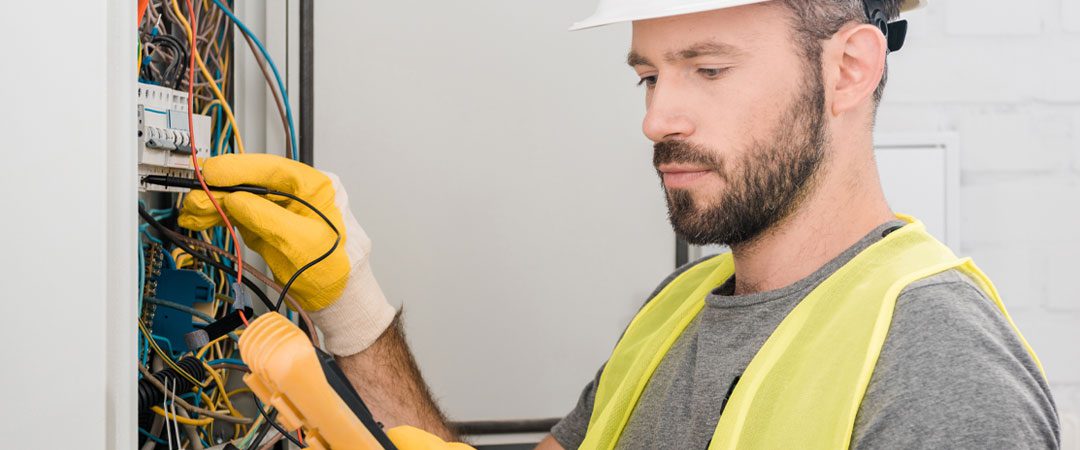
Keep these electrical safety tips front of mind at home and at work. We want everyone safe and sound year-round.
Do
- Read and follow electrical equipment instruction manuals prior to use.
- Use safety signs, barricades and tags to identify and protect electrical equipment.
- Only use extension cords as a last resort.
- Use waterproof cords in an outdoor application.
- Contact a certified electrician when electrical repairs are needed.
- Move flammable items, like clothing or stationery, away from lamps or exposed bulbs.
- Keep curtains away from lightbulbs. They can get hot and start a fire.
- Store cords away from walking surfaces. When repeatedly stepped on, they can wear out and cause a fire.
- Use bulbs with the correct wattage.
- Heat-producing appliances, such as toasters, coffeemakers, irons or microwave ovens, draw a lot of electricity. Plug in only one heat-producing appliance per outlet to prevent wiring from overheating.
- Pull the plug, not the cord.
- Inspect your home for hidden electrical hazards.
- Ensure receptacle outlets and switches have wall plates/faceplates.
- Call a certified electrician or your landlord if you have:
- Frequent problems with blowing fuses or tripping circuit breakers.
- A tingling feeling when you touch an electrical appliance.
- Discolored or warm wall outlets.
- A burning or rubbery smell coming from an appliance.
- Flickering or dimming lights.
- Sparks from an outlet.
Don’t
- Overload outlets by using splitters.
- Touch electrical equipment, including power cords, with wet or damp hands.
- Allow dirt, grease or dust to accumulate on electrical equipment.
- Implement temporary wiring in place of permanent wiring.
- Use cords or equipment that are not properly grounded.
- Climb the fence around an electrical substation. Ever.
- Yank an electrical cord from the wall.
- Keep electrical items near water.
- Place heavy items on top of a cord. The weight can wear out the cord and possibly cause a fire.
Common causes of arc faults
When electrical safety steps are disregarded, arc faults can occur and increase the likelihood of an electrical fire. Arc faults are caused by loose wire connections, corroded wires, etc., which can result in sparking or arcing that generates heat and creates potential for electrical fires.
Additional electrical safety tips and facts
- Arcing accounts for most home electrical fires. Arc-fault circuit interrupters (AFCIs) protect against fire by monitoring the electrical current in a circuit and shutting off the circuit when unintended arcing occurs. AFCIs should be installed in your home. If not, have a professional electrician install them for you.
- Some of the leading causes of electrical accidents in offices include unsafe installations, faulty or defective equipment and equipment misuse (especially involving surge protectors, power strips and extension cords).
- Use proper gloves with rubber insulation and the appropriate tools.
- Determine and obey work safety boundaries to protect against arc flash and shock. Ensure your electrical safety by always wearing arc-rated gear with a face shield.
- A ground fault circuit interrupter (GFCI) should be used with plugged-in tools and extension cords at all times.
- Mitigate electrical hazards by using the proper personal protective equipment and engineering controls.
- Avoid running extension cords across doorways or under carpets. Consider having additional circuits or outlets added by a qualified electrician, so you do not have to use extension cords.
- In homes with small children, make sure your home has tamper-resistant receptacles.
- If outlets or switches feel warm or you have frequent problems with blowing fuses, tripping circuits or flickering or dimming lights, call a qualified electrician.
- Make sure your home has GFCIs in the kitchen, bathroom(s), laundry room, basement and outdoor areas.
- Store your electrical tools indoors and away from children.
Read more
30 Electrical Safety Tips for the Workplace
6 Steps to Lockout/Tagout (LOTO) Maintenance: A Fundamental Guide
67 Toolbox Talk Topics: Critical Safety Shares to Emphasize with Your Team